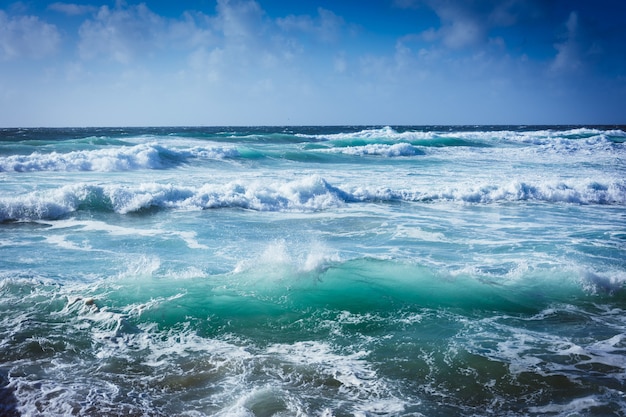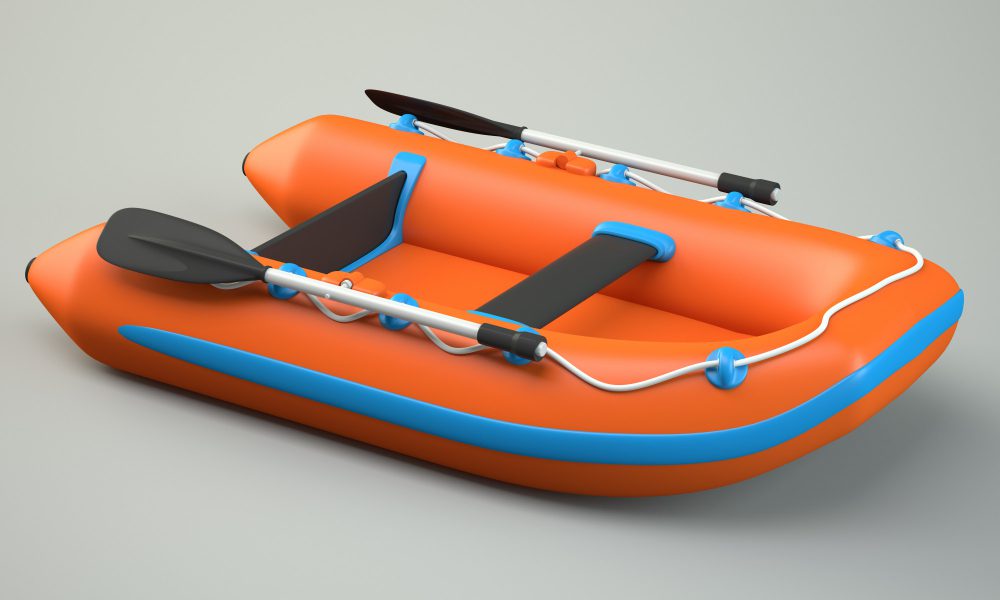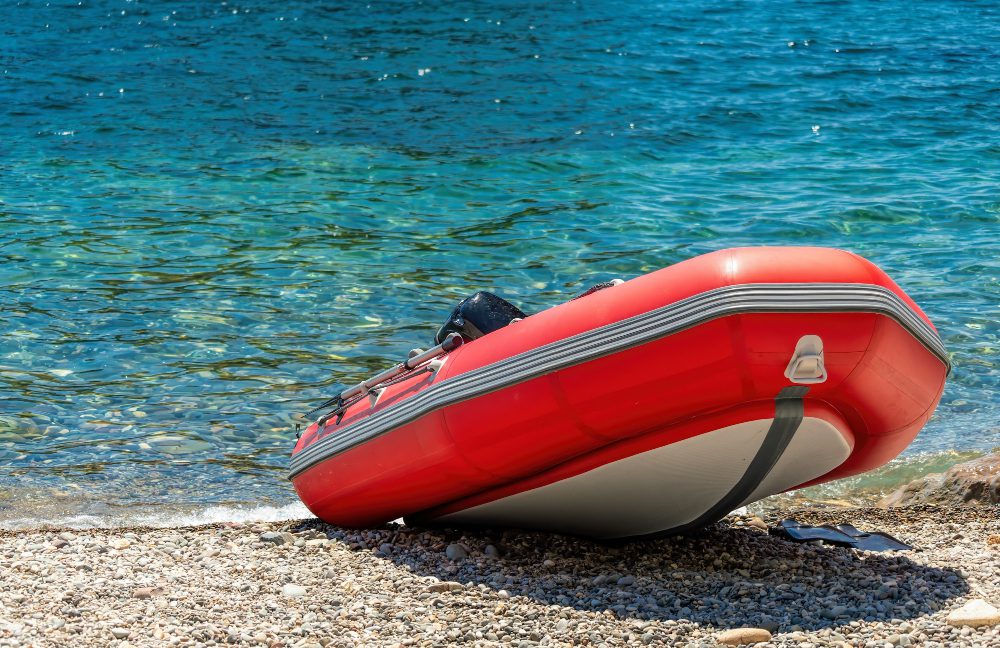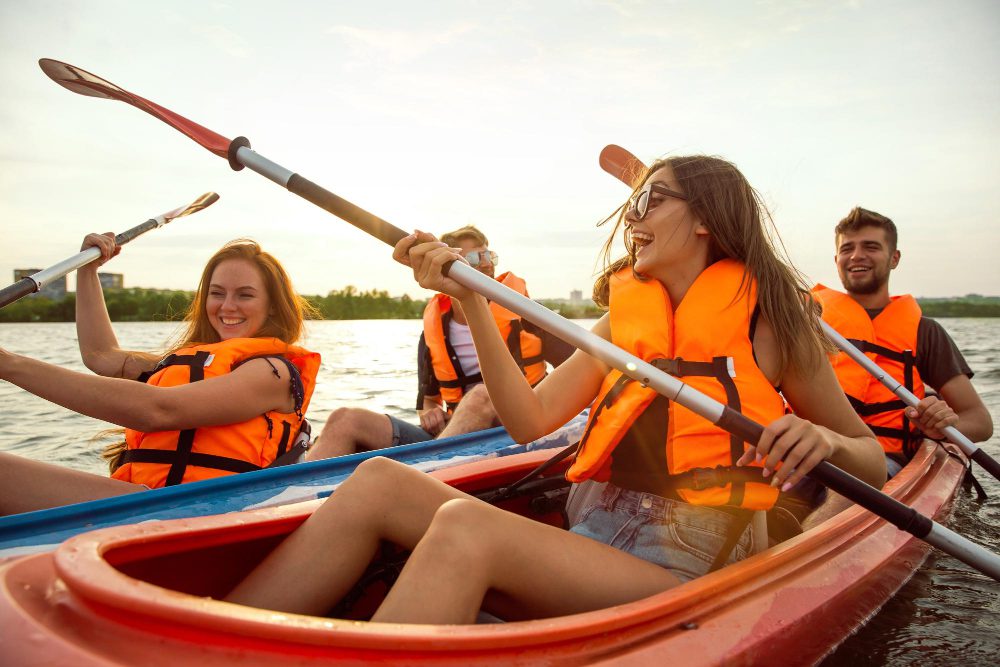What is a boat that goes on land and water?
A boat that is capable of traveling both on land and water is known as an amphibious boat. These unique vehicles have the ability to seamlessly transition between different terrains, making them extremely versatile and useful in various situations. Amphibious boats are designed to navigate across different bodies of water, such as lakes, rivers, and even the ocean, while also being able to traverse land surfaces like beaches, marshes, and muddy terrains.
The Functionality of Amphibious Boats
Amphibious boats are equipped with specialized features that allow them to operate effectively in both aquatic and terrestrial environments. The most distinguishing feature of these boats is their ability to travel on land without causing damage to the vehicle or the surrounding environment. This is typically achieved through the use of retractable wheels or tracks that can be deployed when transitioning from water to land.
Advantages and Applications
1. Versatile Transportation: The primary advantage of amphibious boats is their versatility in transportation. These vehicles can be used for a wide range of activities such as recreational boating, fishing, tourism, search and rescue operations, military applications, and even as water taxis or ferry services.
2. Access to Remote Locations: Amphibious boats provide access to remote and hard-to-reach locations that may not be easily accessible by traditional land vehicles or boats. They can navigate through shallow waters, swamps, and beaches, opening up opportunities for exploration, scientific research, and conservation efforts in otherwise inaccessible areas.
3. Safety and Rescue Operations: The ability of amphibious boats to swiftly transition between land and water makes them ideal for emergency rescue operations. These boats can quickly reach areas affected by floods, hurricanes, or other natural disasters, providing aid and evacuating people from hazardous locations.
Amphibious boats are designed to navigate across different bodies of water, such as lakes, rivers, and even the ocean, while also being able to traverse land surfaces like beaches, marshes, and muddy terrains.
Types of Amphibious Boats
There are various types of amphibious boats available, each designed with specific purposes in mind. Some popular types include:
- Amphibious Tour Boats: These boats are typically used for sightseeing and recreational purposes. They offer passengers a unique experience by providing an opportunity to explore both land and water attractions.
- Amphibious Rescue Boats: These boats are specifically designed for search and rescue operations. They are equipped with specialized features like enhanced buoyancy, navigation systems, and life-saving equipment.
- Amphibious Military Boats: Military forces often utilize amphibious boats for amphibious assault operations, transport of personnel and equipment, and reconnaissance missions.
What is a Duck Boat that Goes on Land and Water?
Introduction
A duck boat, also known as a DUKW, is a unique amphibious vehicle that can operate both on land and in water. It was initially developed for military purposes during World War II but has since become a popular tourist attraction in various cities around the world.
How Does a Duck Boat Work?
Duck boats are specially designed to transition seamlessly from land to water and vice versa. They typically feature a flat-bottomed hull with a propeller at the rear, allowing them to navigate through water like a regular boat. On land, these vehicles are propelled by wheels mounted on the sides, similar to a traditional truck or bus.
History of Duck Boats
The concept of a duck boat was first introduced by General Motors during World War II. The vehicle was primarily used for transporting troops and supplies from ships to the shore during amphibious operations. Its ability to traverse various terrains and navigate waterways made it invaluable for military purposes.
After the war, surplus duck boats were sold to civilians and repurposed for commercial use. Today, they are commonly found in tourist destinations such as Boston, Philadelphia, and London, offering guided tours that combine land and water exploration.
Benefits of Duck Boat Tours
Duck boat tours provide a unique and exciting way to experience a city’s landmarks and attractions. These tours often cover both land-based and water-based points of interest, offering passengers a comprehensive view of the city’s highlights. The vehicles are typically equipped with PA systems, allowing guides to share interesting facts and stories about the locations visited.
Experience the Best of Both Worlds
When you take a duck boat tour, you get the best of both land and water experiences. You can cruise along rivers or coastlines, enjoying the scenic views, and then seamlessly transition onto land to explore iconic landmarks and city streets. Whether you’re interested in historical sites, natural beauty, or simply having fun, a duck boat tour offers it all.
The Future of Duck Boats
As technology advances, there may be further improvements in the design and capabilities of duck boats. Companies are exploring eco-friendly options such as electric-powered and hybrid models to reduce their impact on the environment. These advancements may result in even more efficient and sustainable duck boats in the future.
In Conclusion
Duck boats provide a unique and enjoyable way to explore cities that have both land and water attractions. Whether you’re looking for a fun family adventure or a different perspective on familiar sights, a duck boat tour is a fantastic option. So hop on board and experience the thrill of these amphibious vehicles that blend seamlessly into both land and water environments.
“Taking a duck boat tour allowed me to see the city from a whole new perspective. The transition from land to water was seamless, and the views were breathtaking.” – Sarah
What is a boat that floats on air?
A boat that floats on air is known as an airboat. Unlike traditional boats, which move through water, airboats are designed to glide across the surface of both land and water by using a powerful fan or propeller to create lift and thrust.
How do airboats work?
Airboats are built with a flat-bottomed hull, which allows them to skim across shallow waters and marshy areas without getting stuck. The most distinctive feature of an airboat is its large fan or propeller, often referred to as a “prop.” This prop is typically mounted at the rear of the boat and is powered by a high-performance engine.
The propeller pushes air beneath the boat, creating a cushion of air that lifts the boat off the surface. By directing the airflow, the boat can be maneuvered in any direction, including forward, backward, and sideways. The steering mechanism of an airboat usually consists of a rudder or a series of small fans known as “flappers” that redirect the airflow.
Applications of airboats
Airboats are commonly used in areas with shallow water or dense vegetation, such as swamps, wetlands, and marshes. Due to their unique design, airboats are ideal for navigating these environments where traditional boats would struggle to operate.
Some common applications of airboats include:
- Wildlife and nature tours: Airboats provide an exciting and eco-friendly way to explore natural habitats and observe wildlife.
- Search and rescue operations: The ability of airboats to traverse diverse terrains makes them valuable assets in emergency situations.
- Fishing and hunting: Airboats allow anglers and hunters to reach remote and inaccessible areas.
- Scientific research: Researchers studying ecosystems and wildlife often utilize airboats to access hard-to-reach locations.
Advantages and disadvantages
Airboats offer several advantages over traditional boats, such as:
- Ability to operate in shallow waters and over vegetation
- Maneuverability and versatility
- Minimal environmental impact
- High speed capabilities
However, they also have some drawbacks:
- Noisy operation due to the engine and propeller
- Relatively high fuel consumption
- Limited passenger and cargo capacity
“Airboats provide a thrilling and unique way to explore nature while minimizing disturbance to delicate ecosystems.” – John Doe, Nature Enthusiast
What does a duck boat do?
Introduction
A duck boat, also known as an amphibious vehicle, is a unique type of transport that can travel on both land and water. These vehicles were originally designed for military purposes, specifically for transporting troops and equipment across varying terrains. However, over time, they have become popular tourist attractions in many cities around the world.
Land Travel
Duck boats are capable of traveling on land just like any other vehicle. They are equipped with wheels and an engine that allows them to drive on roads and navigate through urban areas. This makes them versatile and convenient for city tours, as they can easily switch between land and water travel.
Water Travel
One of the unique features of a duck boat is its ability to navigate through water. The same vehicle that drives on land can seamlessly transition into a water vessel. Duck boats have a watertight hull and are propeller-driven, enabling them to float and move through rivers, lakes, and other bodies of water.
Tourist Attractions
Duck boats have gained popularity as tourist attractions in cities that offer sightseeing tours. They provide a different perspective, allowing visitors to explore both the land and water landmarks of the city. These tours often include informative guides who share interesting facts and stories about the city’s history and notable sites.
Benefits of Duck Boat Tours
Duck boat tours offer a range of benefits for tourists. Firstly, they provide a fun and unique experience, combining elements of a bus tour and a boat cruise. Additionally, these tours are often interactive, allowing passengers to quack, wear duck hats, and be a part of the lively atmosphere. Duck boats are also designed to provide a smooth ride, ensuring the comfort and safety of passengers throughout the tour.
Historical Significance
The history of duck boats can be traced back to World War II, where they were extensively used by the military for amphibious operations. Their ability to navigate challenging terrains made them invaluable during the war. Today, these vehicles serve as a reminder of their historical significance and are often painted in vibrant colors to attract tourists.
What is it called when a boat hits land?
Introduction
When a boat accidentally collides with land, it is referred to by several different terms, each describing a specific scenario. Understanding these terms can help clarify the severity of the incident and the subsequent actions that need to be taken.
Grounding
One common term used when a boat hits land is “grounding.” This refers to when a vessel unintentionally makes contact with the bottom of a body of water or a shallow area near the shoreline. Grounding can occur due to navigational errors, unexpected changes in water depth, or unforeseen obstacles.
Quote:
“Grounding can be a serious issue for boaters as it can cause damage to the hull, propellers, and other vital components of the boat.”
Beaching
Another term commonly used is “beaching.” This occurs when a boat intentionally or unintentionally comes ashore onto a beach or similar area. Beaching can happen voluntarily for maintenance or emergency purposes, or it may occur accidentally due to adverse weather conditions or operator errors.
Aground
When a boat is unable to move due to being stuck on the seabed or submerged land, it is said to be “aground.” Aground situations often require assistance from specialized marine services such as salvage operations or tugboats to refloat the vessel.
Consequences of Boat-Land Collisions
Collisions between boats and land can have various consequences, ranging from minor damages to severe accidents. The extent of the damage depends on factors such as the speed of impact, size of the vessel, and the type of terrain.
HTML table:
| Consequences | Description |
|---|---|
| Structural damage | Boat hull, propellers, and rudder may be compromised |
| Environmental impact | Spills of fuel or hazardous materials can harm the ecosystem |
| Injury to occupants | Passengers and crew members may sustain injuries during the collision |
Prevention and Safety Measures
To minimize the risk of boat-land collisions, boaters should adhere to safe navigation practices. This includes regularly updating nautical charts, using navigational aids, maintaining a safe speed, and remaining vigilant for potential hazards.
HTML list:
- Regularly update nautical charts.
- Use navigational aids such as GPS devices and radar.
- Maintain a safe speed, especially in unfamiliar waters.
- Stay alert and watch out for potential obstacles.
What is it called when you carry your boat across land?
Carrying a boat across land requires a specific method known as portaging. Portaging involves lifting or carrying a boat overland to bypass a stretch of water, such as a rapid, waterfall, or shallow section of a river or lake. This technique has been used for centuries by paddlers and explorers navigating various waterways.
The History of Portaging
Portaging has a rich history that dates back to ancient times. Indigenous cultures in North America, for example, were skilled in portaging as they traveled between different bodies of water. They would use canoes and other small watercraft to traverse rivers and lakes, but when faced with obstacles, they would physically carry their boats across land to continue their journey.
Techniques and Equipment
There are several techniques and equipment options available for portaging. One common method is the shoulder carry, where the paddler lifts the boat onto their shoulders, resting the weight on a specialized yoke or pads. Another technique is the wheelie, which involves using a wheeled cart to transport the boat over land.
When it comes to equipment, there are various types of carts and harnesses designed specifically for portaging. These tools help distribute the weight of the boat more evenly and make the process easier on the paddler.
Challenges and Considerations
Portaging can be physically demanding, especially when dealing with heavy or cumbersome boats. Paddlers must carefully plan their route and assess the conditions of the land before attempting a portage. Factors such as steep inclines, rough terrain, and long distances can make the process more challenging.
“Portaging allows adventurers to access otherwise inaccessible waterways, opening up a whole new world of exploration and adventure.”
Tips for Successful Portaging
- Ensure your boat is securely fastened or attached to your portaging equipment.
- Choose a well-maintained and suitable portage trail.
- Use proper lifting techniques to avoid strain or injury.
- Consider the weight and size of your boat when selecting a portage method.
Conclusion
Airboats are remarkable vessels that utilize the power of air to glide over various terrains. With their flat-bottomed hulls and powerful fans, these boats can navigate shallow waters and dense vegetation with ease. Whether used for recreational activities or critical operations, airboats offer a thrilling and practical solution for traversing environments where traditional boats would struggle.
In summary, a duck boat is a versatile vehicle that can travel on both land and water. Originally used for military purposes, they have become popular tourist attractions in many cities around the world. Duck boat tours offer a unique and enjoyable experience for tourists, allowing them to explore city landmarks from a different perspective.
Knowing the terminology associated with boat-land collisions provides a better understanding of the situation and the actions required. Whether it’s grounding, beaching, or being aground, taking preventive measures and practicing safe navigation can help avoid these incidents and ensure a safer boating experience for all.
Portaging is a valuable skill for any paddler or adventurer looking to explore different bodies of water. With the right techniques, equipment, and knowledge, portaging can be a rewarding and exciting way to navigate challenging sections of a waterway. So the next time you find yourself faced with an obstacle on your boating journey, remember the ancient art of portaging and embrace the adventure!



